Papacy began 23 May 1555 Papacy ended 18 August 1559 | Birth name Gian Pietro Carafa Consecration September 18, 1505 Name Pope IV | |
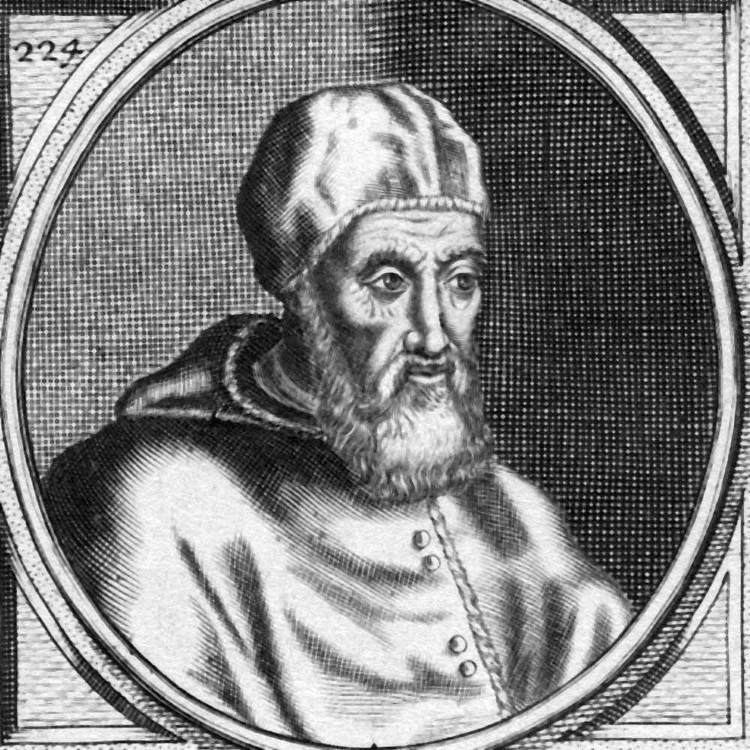 | ||
Parents Giovanni Antonio Carafa, Vittoria Camponeschi | ||
Created cardinal December 22, 1536 | ||
Cum ex apostolatus officio pope paul iv 1559
Pope Paul IV, C.R. (Latin: Paulus IV; 28 June 1476 – 18 August 1559), born Gian Pietro Carafa, was Pope from 23 May 1555 to his death in 1559. While serving as papal nuncio in Spain, he developed an anti-Spanish outlook that later coloured his papacy, and resulted in the Papal States suffering a serious military defeat in the Italian War of 1551–59.
Contents
- Cum ex apostolatus officio pope paul iv 1559
- Eshes chail pope and rabbis the battle between gracia mendez and pope paul iv in the 1550 s
- Early life
- Bishop
- Cardinal
- Election as pope
- Papacy
- Death
- In fiction
- References
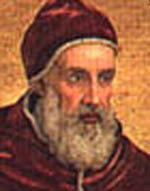
Carafa was appointed bishop of Chieti, but resigned in 1524 in order to found with St. Cajetan the Congregation of Clerics Regular (Theatines). Recalled to Rome, and made Archbishop of Naples, he was instrumental in setting up the Roman Inquisition, and was opposed to any dialogue with the emerging Protestant party in Europe. Carafa was elected pope in 1555 through the influence of Cardinal Alessandro Farnese in the face of opposition from Emperor Charles V. His papacy was characterized by strong nationalism in reaction to the influence of Philip II of Spain and the Habsburgs. He compelled the Jews of Rome to wear distinctive clothing and confine themselves to a ghetto. The appointment of Carlo Carafa as Cardinal Nephew damaged the papacy further when Paul was forced to remove him from office following a scandal. He curbed many clerical abuses in Rome but his methods were seen as harsh.
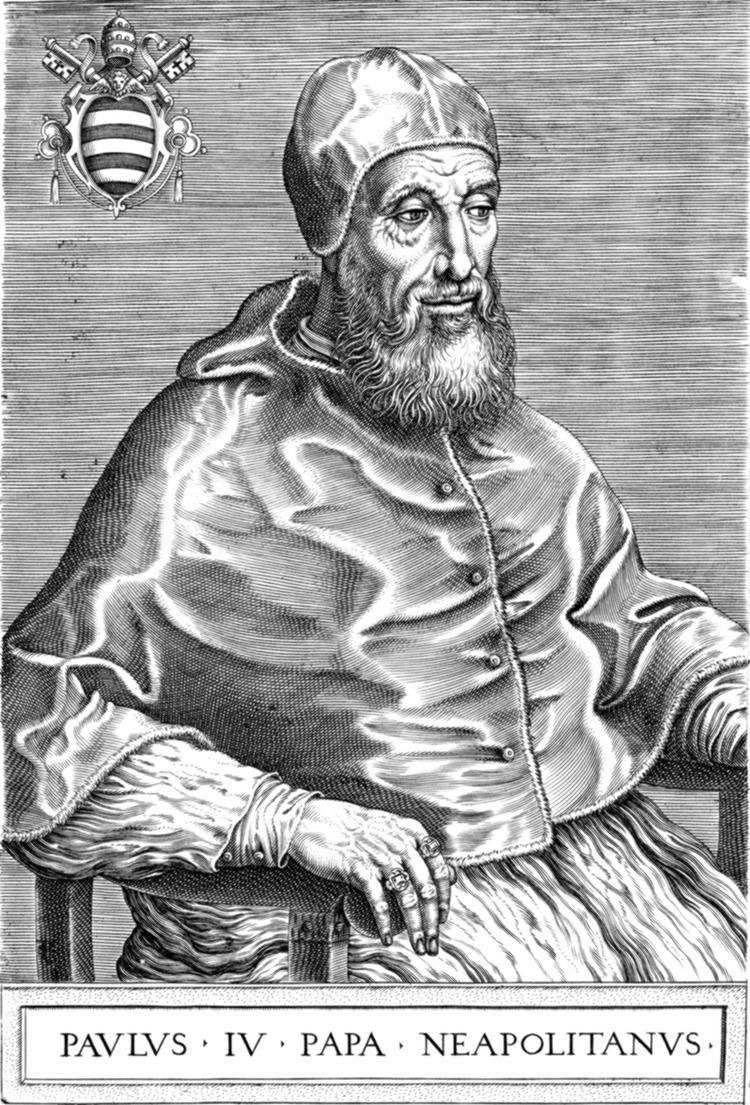
Eshes chail pope and rabbis the battle between gracia mendez and pope paul iv in the 1550 s
Early life
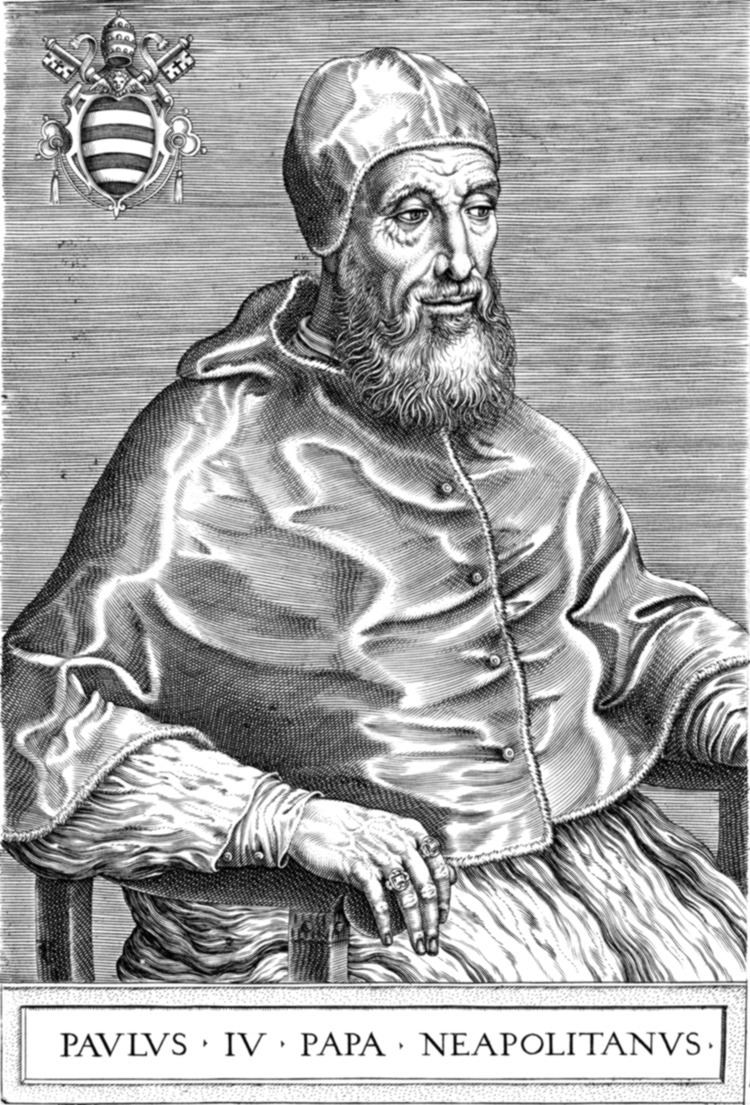
Gian Pietro Carafa was born in Capriglia Irpina, near Avellino, into a prominent noble family of Naples. His father Giovanni Antonio Carafa died in West Flanders in 1516 and his mother Vittoria Camponeschi was the daughter of Pietro Lalle Camponeschi, 5th Conte di Montorio, a Neapolitan nobleman, and wife Dona Maria de Noronha, a Portuguese noblewoman of the House of Pereira.
Bishop
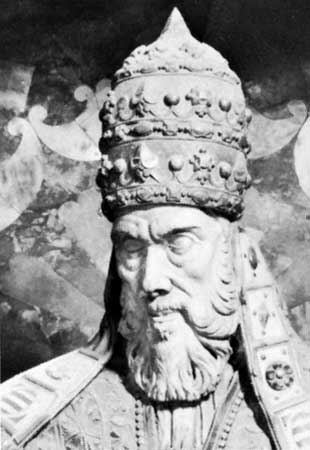
He was mentored by Cardinal Oliviero Carafa, his relative, who resigned the see of Chieti (Latin Theate) in his favour. Under the direction of Pope Leo X, he was ambassador to England and then papal nuncio in Spain, where he conceived a violent detestation of Spanish rule that affected the policies of his later papacy.
However, in 1524, Pope Clement VII allowed Carafa to resign his benefices and join the ascetic and newly founded Congregation of Clerks Regular, popularly called the Theatines, after Carafa's see of Theate. Following the sack of Rome in 1527, the order moved to Venice. But Carafa was recalled to Rome by the reform-minded Pope Paul III (1534–49), to sit on a committee of reform of the papal court, an appointment that forecast an end to a humanist papacy and a revival of scholasticism, for Carafa was a thorough disciple of Thomas Aquinas.
Cardinal
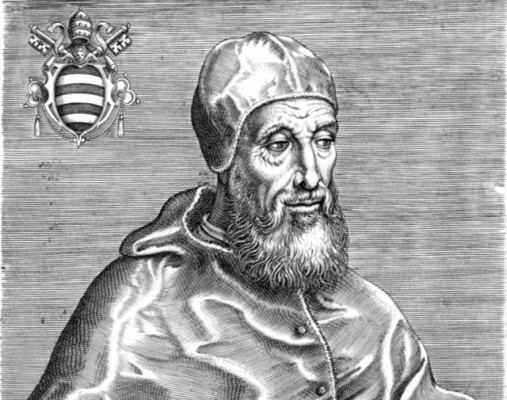
In December 1536 he was made Cardinal-Priest of S. Pancrazio and then Archbishop of Naples.
The Regensburg Colloquy in 1541 failed to achieve any measure of reconciliation between Catholics and Protestants in Europe, but instead saw a number of prominent Italians defect to the Protestant camp. In response, Carafa was able to persuade Pope Paul III to set up a Roman Inquisition, modelled on the Spanish Inquisition with himself as one of the Inquisitors-General. The Papal Bull was promulgated in 1542 and Carafa vowed, "Even if my own father were a heretic, I would gather the wood to burn him".
Election as pope
He was a surprise choice as pope to succeed Pope Marcellus II (1555); his severe and unbending character combined with his advanced age and Italian patriotism meant under normal circumstances he would have declined the honor. He accepted apparently because Emperor Charles V was opposed to his accession.
Papacy
As pope his nationalism was a driving force; he used the office to preserve some liberties in the face of fourfold foreign occupation. Like Pope Paul III, he was an enemy of the Colonna family. His treatment of Giovanna d'Aragona, who had married into that family, drew further negative comment from Venice. This because she had long been a patron of artists and writers.
As Cardinal-nephew, Carlo Carafa became his uncle's chief political adviser. Having accepted a pension from the French, Cardinal Caraffa worked to secure a French alliance. Carlo's older brother Giovanni was made commander of the papal forces and Duke of Paliano after the pro-Spanish Colonna were deprived of that town in 1556. Another nephew, Antonio, was given command of the Papal guard and made Marquis of Montebello. Their conduct became notorious in Rome. However at the conclusion of the disastrous war with Philip II of Spain in the Italian War of 1551–59 and after many scandals, in 1559 the Pope publicly disgraced his nephews and banished them from Rome.
With the Protestant Reformation, the Papacy required all Roman Catholic rulers to consider Protestant rulers as heretics, thus making their realms illegitimate under customary international law. Consequently, Europe's Catholic monarchs considered Ireland a feudal fief of the Papacy, to be granted to any Catholic sovereign who managed to secure the island Kingdom from the control of its Protestant monarchs. Paul IV issued a papal bull in 1555, Ilius, per quem Reges regnant, recognising Philip and Mary as King and Queen of England and its dominions including Ireland. He also angered people in England by insisting on the restitution of property confiscated during the dissolution, and rejected the claim of Elizabeth I of England to the Crown.
Paul IV was violently opposed to the liberal Giovanni Cardinal Morone whom he strongly suspected of being a hidden Protestant, so much that he had him imprisoned. In order to prevent Morone from succeeding him and imposing what he believed to be his Protestant beliefs on the Church, Pope Paul IV codified the Catholic Law excluding heretics and non-Catholics from receiving or legitimately becoming Pope, in the bull Cum ex apostolatus officio.
Paul IV was rigidly orthodox, austere in life, and authoritarian in manner. He affirmed the Catholic doctrine of extra ecclesiam nulla salus ("Outside the Church there is no salvation"). He used the Holy Office to suppress the Spirituali, a Catholic group deemed heretical. The strengthening of the Inquisition continued under Paul IV, and few could consider themselves safe by virtue of position in his drive to reform the Church; even cardinals he disliked could be imprisoned. He appointed inquisitor Michele Ghislieri, the future Pope Pius V, to the position of Supreme Inquisitor despite the fact as Inquisitor of Como, Ghislieri's persecutions had inspired a citywide rebellion, forcing him to flee in fear for his life.
On 17 July 1555, Paul IV issued one of the most famous papal bulls in Church history. The bull, Cum Nimis Absurdum (the title stemmed from its opening phrase, "Since it is absurd") ordered the creation of a Jewish ghetto in Rome. The pope set its borders near the Rione Sant'Angelo, an area where large numbers of Jews already resided, and ordered it walled off from the rest of the city. A single gate, locked every day at sundown, was the only means of reaching the rest of the city. The Jews themselves were forced to pay all design and construction costs related to the project, which came to a total of roughly 300 scudi. The bull restricted Jews in other ways as well. They were forbidden to have more than one synagogue per city—leading, in Rome alone, to the destruction of seven "excess" places of worship. All Jews were forced to wear distinctive yellow hats, especially outside the ghetto, and they were forbidden to trade in everything but food and secondhand clothes. Christians of all ages were encouraged to treat the Jews as second-class citizens; for a Jew to defy a Christian in any way was to invite severe punishment, often at the hands of a mob. By the end of Paul IV's five-year reign the number of Roman Jews had dropped by half. Yet his anti-semitic legacy endured for over 300 years: the ghetto he established ceased to exist only with the dissolution of the Papal States in 1870. Its walls were torn down in 1888.
According to Leopold von Ranke, a rigid austerity and an earnest zeal for the restoration of primitive habits became the dominant tendency of his Papacy. Monks who had left their monasteries were expelled from the city and from the Papal States. He would no longer tolerate the practice by which one man had been allowed to enjoy the revenues of an office while delegating its duties to another
All begging was forbidden. Even the collection of alms for Masses, which had previously been made by the clergy, was discontinued. A medal was struck representing Christ driving the money changers from the Temple. Paul IV put in place a reform of the papal administration designed to stamp out trafficking of principal positions in the Curia. All secular offices, from the highest to the lowest, were assigned to others based on merit. Important economies were made, and taxes were proportionately remitted. Paul IV established a chest, of which only he held the key, for the purpose of receiving all complaints that anyone desired to make.
During his papacy, censorship reached new heights. Among his first acts as Pope was to cut off Michelangelo's pension, and he ordered the nudes of The Last Judgment in the Sistine Chapel be painted more modestly (a request that Michelangelo ignored) (the beginning of the Vatican's Fig leaf campaign). Paul IV also introduced the Index Librorum Prohibitorum or "Index of Prohibited Books" to Venice, then an independent and prosperous trading state, in order to crack down on the growing threat of Protestantism. Under his authority, all books written by Protestants were banned, together with Italian and German translations of the Latin Bible.
Death
Paul IV's health began to break down in May 1559. He rallied in July, holding public audiences and attending meetings of the Inquisition. But he engaged in fasting, and the heat of the summer wore him down again. He was bedridden, and on August 17 it became clear he would not live. Cardinals and other officials gathered at his bedside on August 18, where Paul IV asked them to elect a "righteous and holy" successor and to retain the Inquisition as "the very basis" of the Catholic Church's power. By 2 or 3 PM, he was close to death, and died at 5 PM.
The people of Rome did not forget what they had suffered because of the war he had brought on the State. Crowds of people gathered at the Piazza del Campidoglio and began rioting even before Paul IV died. His statue, erected before the Campidoglio just months before, had a yellow hat placed on it (similar to the yellow hat Paul IV had forced Jews to wear in public). After a mock trial, the statue was decapitated. It was then thrown into the Tiber.
The crowd broke into the three city jails and freed more than 400 prisoners, then broke into the offices of the Inquisition at the Palazzo dell' Inquisizone near to the Church of San Rocco. They murdered the Inquisitor, Tommaso Scotti, and freed 72 prisoners. One of those released was Dominican John Craig, who later was a colleague of John Knox. The people ransacked the palace, and then set it afire (destroying the Inquisition's records). That same day, or the next day (records are unclear), the crowd attacked the Church of Santa Maria sopra Minerva. The intercession of some local nobility dissuaded them from burning it and killing all those within. On the third day of rioting, the crowd removed the Carafa family coat of arms from all churches, monuments, and other buildings in the city.
The crowd dedicated to him the following pasquinata:
Carafa hated by the devil and the skyis buried here with his rotting corpse,Erebus has taken the spirit;he hated peace on earth, our faith he contested.he ruined the church and the people, men and sky offended;treacherous friend, suppliant with the army which was fatal to him.You want to know more? Pope was him and that is enough.Such hostile views have not mellowed much with time; modern historians tend to view his papacy as an especially poor one. His policies stemmed from personal prejudices—against Spain, for example, or the Jews—rather than any overarching political or religious goals. In a time of precarious balance between Catholic and Protestant, his adversarial nature did little to slow the latter's spread across northern Europe. His anti-Spanish feelings alienated the Habsburgs, arguably the most powerful Catholic rulers in Europe, and his ascetic personal beliefs left him out of touch with the artistic and intellectual movements of his era (he often spoke of whitewashing the Sistine Ceiling). Such a reactionary attitude alienated clergy and laity alike: historian John Julius Norwich calls him "the worst pope of the 16th century."
Four or five hours after his death, Paul IV's body was taken to the Cappella Paolina chapel in the Apostolic Palace. It lay in repose, and a choir sang the Office of the Dead on the morning of August 19. Cardinals and many others then paid homage to Paul IV ("kissed the feet of the pope"). The canons of St. Peter's Basilica refused to take his body into the basilica unless they were paid the customary money and gifts. Instead, the canons sang the usual office in the Cappella del Santissimo Sacramento (Chapel of the Blessed Sacrament). Paul IV's body was taken to the Sistine Chapel in the Apostolic Palace at 6 PM.
Paul IV's nephew, Cardinal-nephew Carlo Carafa, arrived in Rome late on August 19. Worried that the rioters might break in and desecrate the pope's corpse, at 10 PM Cardinal Carafa had Pope Paul IV buried without ceremony next to the Cappella del Volto Santo (Chapel of the Holy Face) in St. Peter's. His remains stayed there until October 1566, when his successor as pope, Pius V, had them transferred to Santa Maria sopra Minerva. In the chapel founded by Paul IV's uncle and mentor, Cardinal Oliviero Carafa, a tomb was created by Pirro Ligorio and Paul IV's remains placed therein.
In fiction
Paul IV's title in the Prophecy of St. Malachy is "Of the Faith of Peter".
As Paul IV, Carafa appears as a character in John Webster's Jacobean revenge drama The White Devil (1612).
In the novel Q by Luther Blissett, while not appearing himself, Gian Pietro Carafa is mentioned repeatedly as the cardinal whose spy and agent provocateur, Qoelet, causes many of the disasters to befall Protestants during the Reformation and the Roman Church's response in the 16th century.
